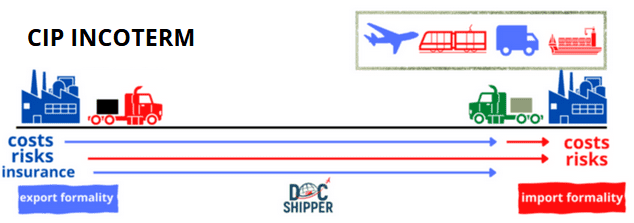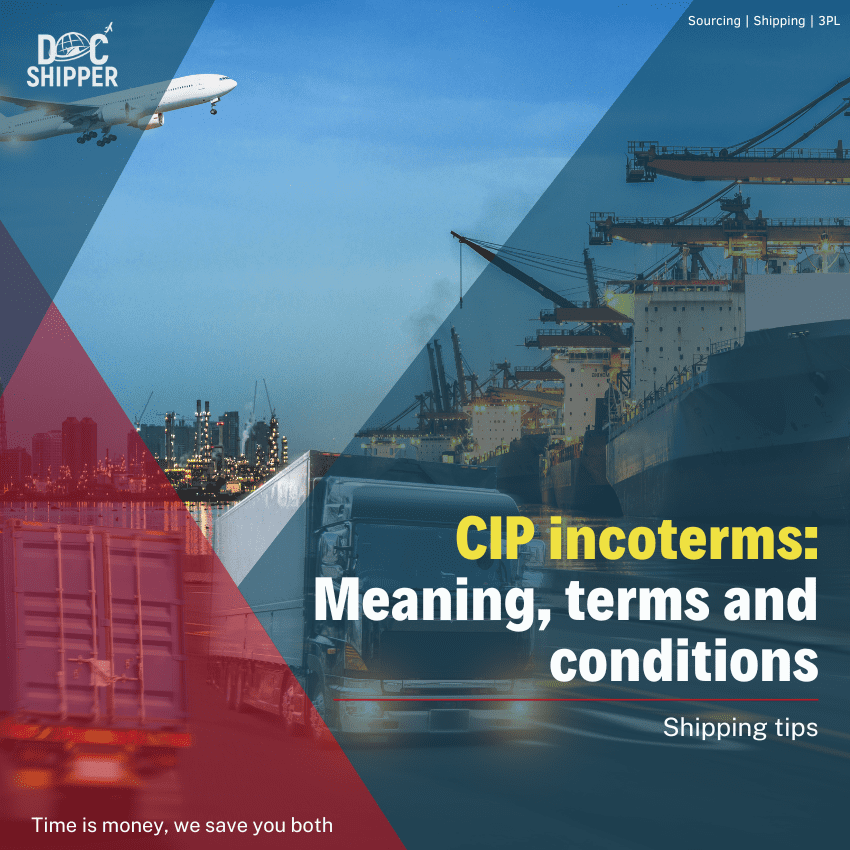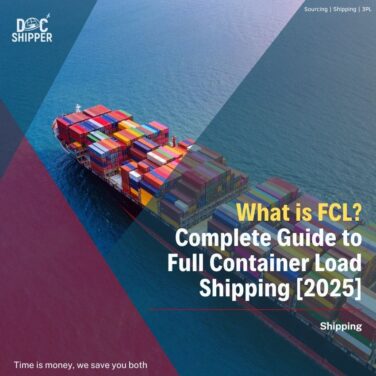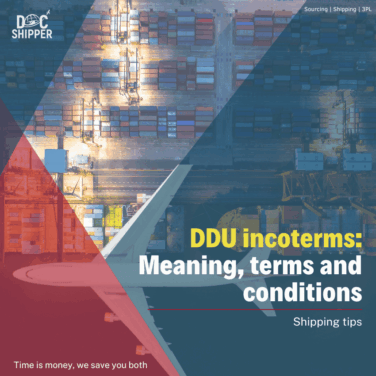International commercial terms, or incoterms represent a series of laws and regulations related to import and export activities.
CIP (Carriage and Insurance Paid To) incoterms are often employed for the flexibility they provide to both the seller and buyer. Their simplicity, adaptability, and clear division of risks also make them a good option for international shipping.
What exactly are CIP incoterms, what do they entail, and when do you use them? Let’s find out!
What does CIP mean?
CIP, which stands for Cost and Insurance Paid To, is an incoterm suitable for any mode of transportation. This is one of the reasons it is interesting to use it in a multimodal shipping process.
Under CIP Agreement, the seller carries out the same responsibilities as the ones under CIF Agreement. In other words, he is responsible for managing the goods until they arrive at the designated place in the destination country. He also has to pay for freight charges, as well as provide freight insurance for the items. However, the transfer of risks occurs when the goods are delivered to the first carrier, in the origin country.
The cargo insurance level required from the seller has to cover all risks. The seller can refer to Institute Cargo Clause (A), published and managed by the Lloyd’s Market Association (LMA).
All in all, CIP incoterm is used for its flexibility, and advantages for both parties.

Siam Shipping Alert
SIAM Shipping Alert : SIAM Shipping offers expertise in production outsourcing from Thailand and beyond. Our experienced team handles it all – from sourcing to shipping – so you can focus on growing your business. Don’t hesitate to contact us via Whatsapp, or request a free shipping quote.
What are the buyer’s and the seller’s responsibilities with CIP?
Let’s take a closer look at the responsibilities of both parties.
Seller’s obligations under CIP:
- Complete the packaging and labeling of items;
- Load goods onto a local carrier (truck, van, etc.) and pay the fees associated with this process;
- Transport and deliver the goods to the shipping terminal;
- Handle the export clearance, which includes export duties, taxes, and customs clearance;
- Remove goods from the local carrier and load them onto the cargo transport, then pay the Origin Terminal Handling Charges (OTHC);
- Pay freight charges and freight insurance.
Buyer’s obligations under CIP:
- Transfer the items to local transportation once they arrive at the destination port/airport and pay the Destination Terminal Handling Charges (DTHC);
- Deliver the goods to the final destination;
- Unload the goods at the final destination;
- Handle the import clearance, which includes import duties, taxes, and customs clearance.
During the process, the seller’s responsibilities for any risks of loss and damages to goods stop when the goods are delivered at the origin point to the first carrier.
Siam Shipping Info
SIAM Shipping info: SIAM Shipping helps with document preparation and offers a customs clearance service. To ensure the project’s feasibility, we carefully review the entire bundle of documents for every shipment we handle. Contact us via WhatsApp, and receive a free quote in less than 24 hours.
When to use CIP Agreement?
CIP Agreement can be a good option for both seller and buyer because it offers a clear division of responsibilities and risks. It should be used in the following situations:
- When the importer wants a secured shipping process, as solid insurance coverage is included in the CIP Agreement;
- For complex logistics process that includes more than one mode of transport employed;
- For high-value or perishable goods, which are items that require good insurance;
- When the exporter wants to have control over most of the shipping process until the goods reach the destination terminal.
FAQ | CIP incoterms: Meaning, terms and conditions
Read more
Looking for more? These articles might interest you:
SIAM Shipping info: Do you like our article today? For your business interest, you may like the following useful articles :
Need Help with Logistics or Sourcing ?
First, we secure the right products from the right suppliers at the right price by managing the sourcing process from start to finish. Then, we simplify your shipping experience - from pickup to final delivery - ensuring any product, anywhere, is delivered at highly competitive prices.

Fill the Form
Prefer email? Send us your inquiry, and we’ll get back to you as soon as possible.
Contact Us








